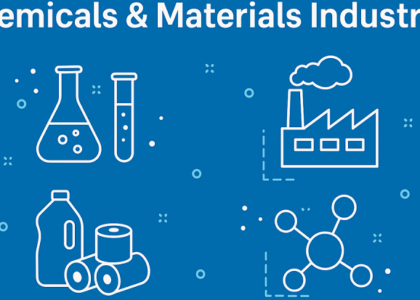Tinplate packaging refers to the use of tin-coated steel sheets in the manufacturing of various packaging materials. Tinplate is a type of steel sheet that has been coated with a thin layer of tin through electroplating. This process provides the steel with corrosion resistance, making it suitable for packaging applications where protection against rust and other environmental factors is essential.
As an enduring contender in the packaging landscape, the Tinplate Packaging industry boasts a history that spans decades, evolving in tandem with technological advancements and consumer preferences. Its timeless appeal lies not only in its protective qualities but also in its aesthetic allure. The gleam of tinplate lends a touch of sophistication to products, making it a preferred choice for a diverse range of goods.
The global tinplate packaging market will witness remarkable expansion, estimated to reach approximately US$ 743.1 million by the end of 2024. Moreover, experts anticipate a robust compound annual growth rate (CAGR) of 4.40% between 2024 and 2034, propelling the market to a projected value of US$ 1,143.2 million by the conclusion of that period.
Get Exclusive Sample Copy of the Report: https://www.futuremarketinsights.com/reports/sample/rep-gb-11888
The demand for tinplate packaging is closely linked to the rising consumption of packaged tinned foods and beverages, aligning with the simultaneous growth in the need for aerosol packaging solutions. This dual demand is propelling the prominence and expansion of the tinplate packaging market on a global scale.
The process of creating tinplate involves coating steel sheets with a thin layer of tin through electroplating. This coating provides several key benefits that make tinplate packaging highly desirable:
- Corrosion Resistance: The tin coating serves as a barrier that protects the underlying steel from corrosion caused by exposure to moisture, air, and other environmental factors. This corrosion resistance ensures the durability and longevity of tinplate packaging, making it ideal for storing and transporting goods over extended periods.
- Barrier Properties: Tinplate packaging offers excellent barrier properties against light, oxygen, and moisture. This helps to preserve the quality, freshness, and flavor of packaged products, particularly perishable items such as food and beverages. The barrier properties of tinplate packaging contribute to extending the shelf life of products and reducing the risk of spoilage.
- Hygiene and Safety: Tinplate packaging is hygienic and safe for use with food and pharmaceutical products. The inert nature of tin ensures that it does not react with or impart any odors, flavors, or harmful substances to the packaged goods. This makes tinplate packaging suitable for packaging sensitive products that require high levels of safety and hygiene standards.
- Versatility: Tinplate packaging is highly versatile and can be customized to meet the specific requirements of different products and applications. It can be formed into various shapes and sizes, allowing for the production of cans, containers, closures, and other packaging formats tailored to the needs of manufacturers and consumers.
- Sustainability: Tinplate packaging is considered environmentally friendly due to its high recyclability. Steel is one of the most recycled materials globally, and tinplate is no exception. Tinplate packaging can be easily collected, sorted, and recycled through established recycling infrastructure, contributing to the circular economy and reducing the environmental impact of packaging waste.
Request Report Methodology: https://www.futuremarketinsights.com/request-report-methodology/rep-gb-11888
Industry Dynamics
Aerosol cans play a vital role in driving the tinplate packaging market, as they find widespread acceptance in a variety of industries, including cosmetics, industrial, automotive, and health and household care sectors. Furthermore, the continuous evolution of new packaging technologies for aerosol products is a dynamic force that is constantly reshaping the landscape of the tinplate packaging market, ensuring its continued growth and adaptability to changing market dynamics.
A primary driver of the tinplate packaging market is its inherent recyclability and reusability, which aligns with the growing global emphasis on eco-friendly packaging solutions. The surge in food and beverage consumption is leading to an increased demand for packaging, and tinplate packaging is emerging as a favored choice to meet this demand, contributing positively to the market’s growth. Innovation is a key catalyst in the creation of modern tinplate cans, as advanced technology and manufacturing processes are leveraged to enhance the quality and efficiency of tinplate packaging.
Key Players
- Amcor Limited
- Ardagh Group S.A.
- Alcoa Corporation
- CPMC Holdings Limited
- Rexam plc, Greif
- Toyo Seikan Group Holdings, Ltd.
- Tata Tinplate
- AJ Packaging Limited
- Ball Corporation
- Thyssenkrupp AG
- Zenith Tins Pvt. Ltd.
- Ardagh Group S.A., Guangnan (Holdings) Limited
- JFE Steel Corporation
- Colep United Kingdom Ltd
- ArcelorMittal;
Buy this Exclusive Report: https://www.futuremarketinsights.com/checkout/11888
Segmentation
- Beverage Cans
- Food Cans
- Aerosol Cans
- Artistic Cans
Tinplate Packaging Market Segmentation on the basis of Type:
- Prime Grade Tinplate
- Secondary Grade Tinplate
- Others
Tinplate Packaging Market Segmentation on the basis of Application
- Food & Beverages
- Electrical & Electronics
- Engineering
- Construction
- Others



